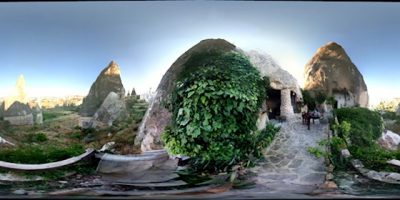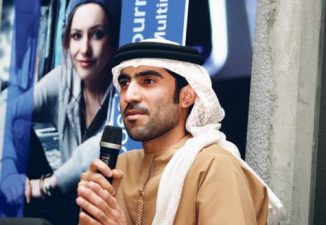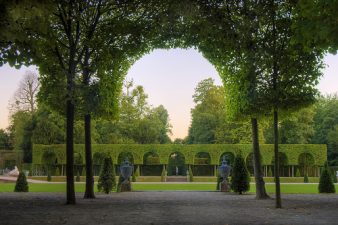 Children whirl around on a swing constructed specially for Eid festivities.
Children whirl around on a swing constructed specially for Eid festivities.
A stone’s throw south of the Somali border lies a little known island called Lamu, a UNESCO protected heritage site that maintains one of the best preserved Swahili cultures in East Africa. In 1652, Oman helped rid Lamu of the Portuguese, setting in motion a period rich in arts, crafts, politics and literature.
And then in the 1880s Habib Salih settled in Lamu, establishing a Madrasa that has since secured Lamu’s place as an important center for Islamic education. Although no Mecca, the island’s colorful Eid celebrations lured children and their mothers out on to the streets usually dominated by kikoy-clad men chewing ghat.
With a style more humane than some Egyptians practice, early yesterday morning the villagers that could afford it sacrificed goats and cows to Allah. And then in the evening, women and giggling girls and boys in their best clothes (who are ordinarily hidden in the home) came out to eat Pilau in usually quiet restaurants. Joyful and festive, everyone on the street was even more courteous and hospitable than usual.
 Swahili women and their children peer out from the side of waterfront shacks. These are constructed out of mangrove poles, which grown in abundance throughout the Lamu archipelago. Mangroves perform several essential roles as carbon sinks, refuge for fish and endangered marine turtles, and they also prevent soil erosion. The Lamu people also use their poles to build their traditional sailboats (dhows).
Swahili women and their children peer out from the side of waterfront shacks. These are constructed out of mangrove poles, which grown in abundance throughout the Lamu archipelago. Mangroves perform several essential roles as carbon sinks, refuge for fish and endangered marine turtles, and they also prevent soil erosion. The Lamu people also use their poles to build their traditional sailboats (dhows).
 A group of young boys sit on a wall beside the swing featured above. With only 100,000 residents, virtually everyone knows everyone else on the island. These boys will be raised together and – unless they move elsewhere to attend school – will most likely still sit on a wall just like this forty years from now. Except then they will wear kikoy (a long and usually colorful length of fabric wrapped around the lower half of their body) and getting high on the legal stems locals chew with gum long into the night.
A group of young boys sit on a wall beside the swing featured above. With only 100,000 residents, virtually everyone knows everyone else on the island. These boys will be raised together and – unless they move elsewhere to attend school – will most likely still sit on a wall just like this forty years from now. Except then they will wear kikoy (a long and usually colorful length of fabric wrapped around the lower half of their body) and getting high on the legal stems locals chew with gum long into the night.
 Two young girls walk along the waterfront. The cement bags on the right are part of the materials being used to prepare for the upcoming Swahili culture festival. Among Muslim communities in Africa, Lamu is famous for its festivals. Maulidi in February and the Swahili festival both draw thousands of visitors each year, a welcome boon to the local community. From November 25-28, locals will put on a show of donkey and dhow races, henna painting, and all kinds of arts and crafts and musicians will be on display from early in the morning until late at night.
Two young girls walk along the waterfront. The cement bags on the right are part of the materials being used to prepare for the upcoming Swahili culture festival. Among Muslim communities in Africa, Lamu is famous for its festivals. Maulidi in February and the Swahili festival both draw thousands of visitors each year, a welcome boon to the local community. From November 25-28, locals will put on a show of donkey and dhow races, henna painting, and all kinds of arts and crafts and musicians will be on display from early in the morning until late at night.
Happy Eid, until next year!
All images by Tafline Laylin
More on Eid activity around the Middle East:
How To: Upcycle Eid Greeting Cards
Eid Al-Adha: Getting close to your meat
Egyptian Activists Claim Eid Animal Slaughter Is Haram



